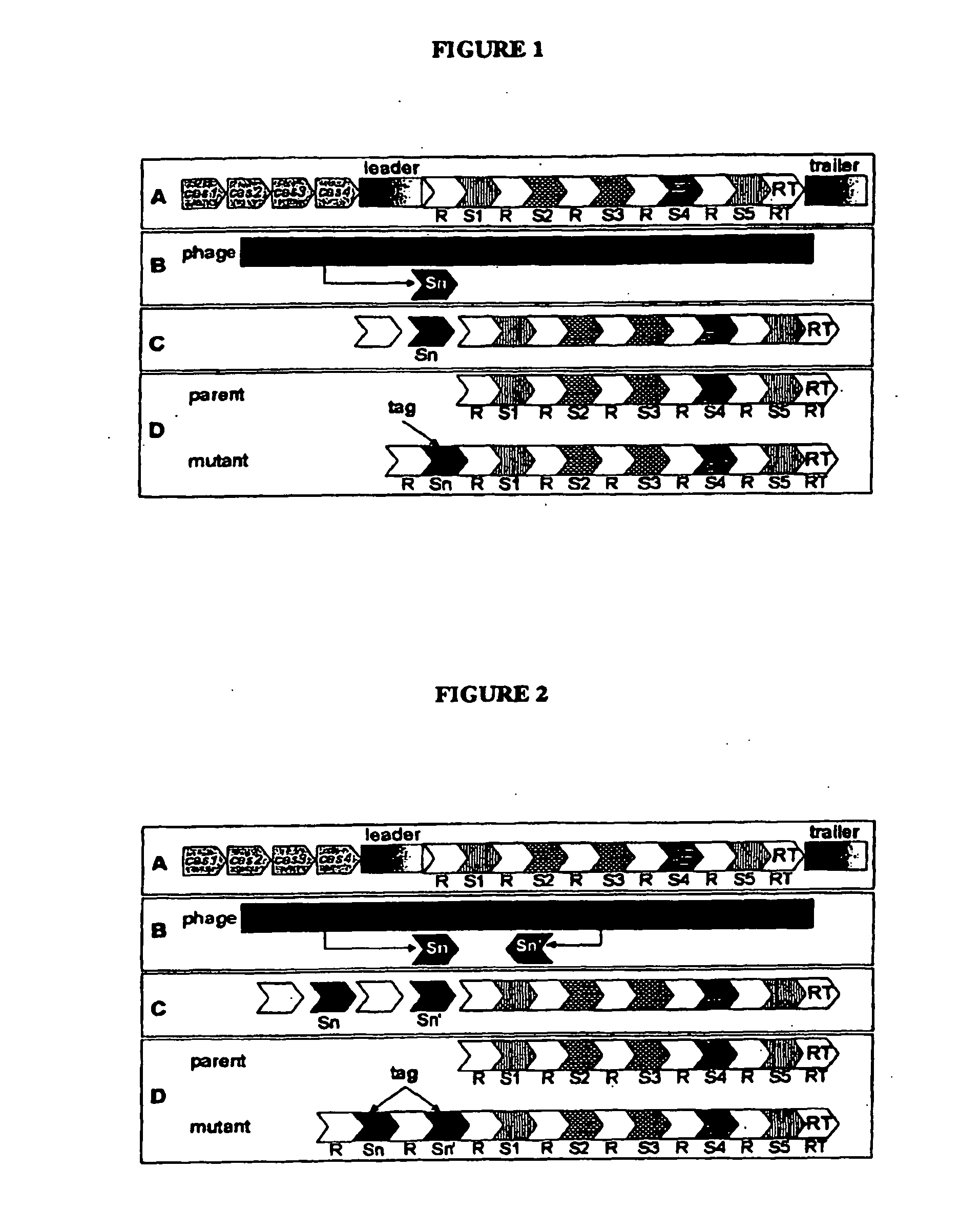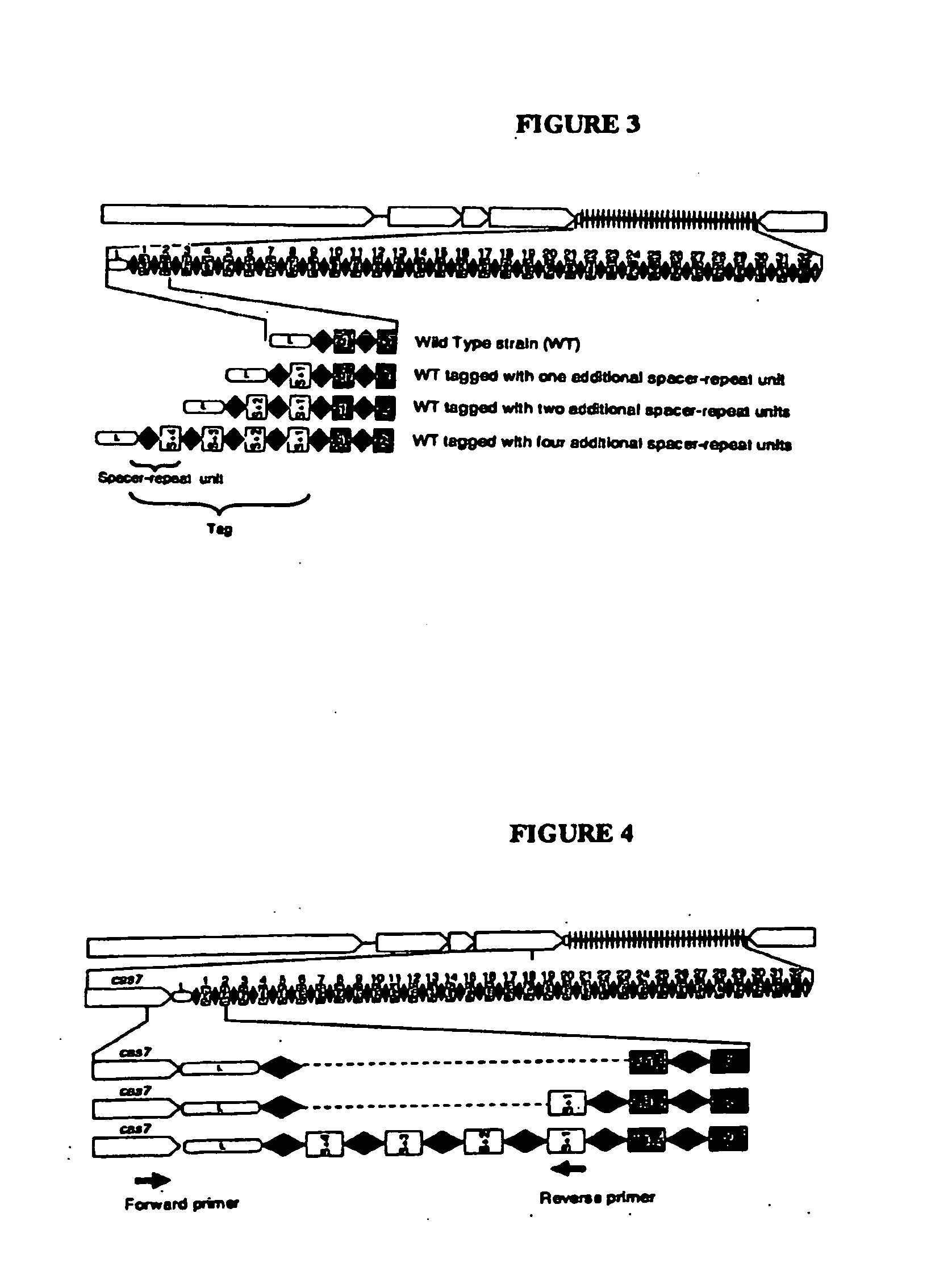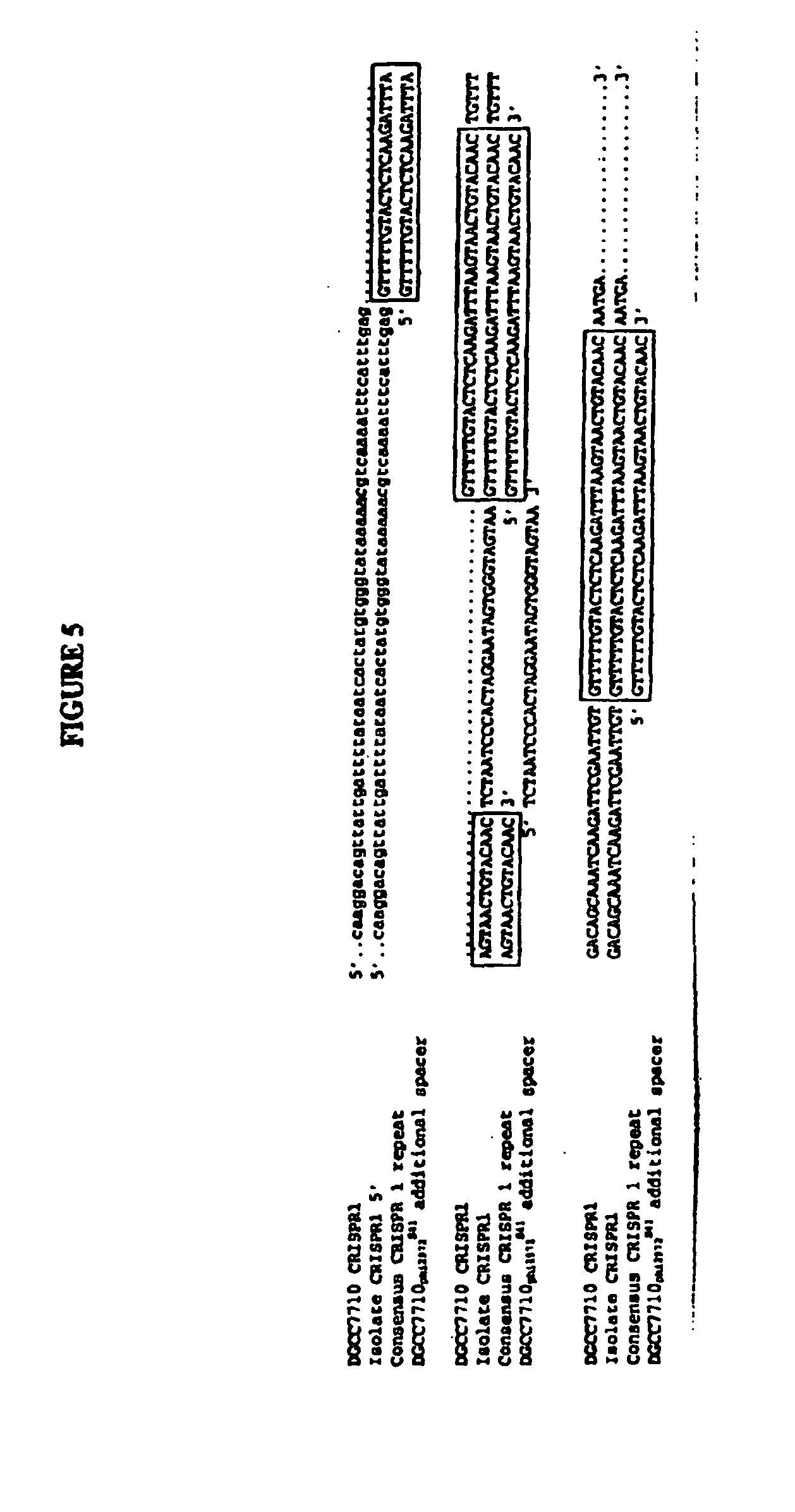Tagged Microorganisms and Methods of Tagging
a microorganism and tag technology, applied in the field of tagging and/or identifying microorganisms, can solve the problems of difficult monitoring of the use of such strains by others, including competitors, and achieve the effect of improving the quality of life and reducing the difficulty of tagging
- Summary
- Abstract
- Description
- Claims
- Application Information
AI Technical Summary
Benefits of technology
Problems solved by technology
Method used
Image
Examples
example 1
Tagging of Streptococcus thermophilus DGCC7710 Using Bacteriophage D2972 by the Insertion of a Single Repeat-Spacer Unit Within CRISPR1
[0208]In this example, S. thermophilus strain DGCC7710 (deposited at the French “Collection Nationale de Cultures de Microorganismes” numbered CNCM 1-2423) was tagged by “natural” insertion within its CRISPR1 locus of an additional repeat-spacer unit with the spacer originating from bacteriophage D2972. The DGCC7710 CRISPR1 locus contains 33 repeats (including the terminal repeat) and 32 spacers (See, GenBank Accession Number: EF434469). Bacteriophage D2972 was isolated from a fermented dairy product using strain DGCC7710. Its genome has been fully sequenced (See, GenBank Accession Number: AY699705). The sequence of the DGCC7710 CRISPR1 locus is:
(SEQ ID NO: 1)caaggacagttattgattttataatcactatgtgggtataaaaacgtcaaaatttcatttgagGTTTTTGTACTCTCAAGATTTAAGTAACTGTACAACtgtttgacagcaaatcaagattcgaattgtGTTTTTGTACTCTCAAGATTTAAGTAACTGTACAACaatgacgaggagctattggcacaacttac...
example 2
Tagging of Streptococcus thermophilus DGCC7710 Using Bacteriophage D858 by the Insertion of a Single Repeat-Spacer Unit Within CRISPR1
[0212]In this Example, S. thermophilus strain DGCC7710 was tagged by “natural” insertion within its CRISPR1 locus with an additional repeat-spacer unit wherein the spacer originated from bacteriophage D858. Bacteriophage D858 is was isolated from a fermented dairy product in strain DGCC7710. D858 is a bacteriophage belonging to the Siphoviridae family of viruses. Its genome sequence has been completely determined (GenBank Accession. Number: EF529515). This phage is virulent to S. thermophilus strain DGCC7710.
Its genome has been fully sequenced
[0213]First, the parental strain (DGCC7710) was exposed to the donor bacteriophage (D858). DGCC7710 was pre-cultivated in sterile milk-based medium (10% w / v of milk powder in water, sterilized 20 min at 110° C.) at 42° C. for 6 hours. The pre-culture was used to inoculate 10 ml of sterile milk-based medium at ab...
example 3
Tagging of Streptococcus thermophilus DGCC7710 Using Bacteriophage D2972 by the Insertion of Multiple Repeat-Spacer Units Within CRISPR1
[0216]In this Example, S. thermophilus strain DGCC7710 was tagged by “natural” insertion within its CRISPR1 locus by the addition of multiple repeat-spacer units with the spacers originating from bacteriophage D2972.
[0217]First, the parental strain (DGCC7710) was exposed to the donor bacteriophage (D2972). DGCC7710 was pre-cultivated in sterile milk-based medium (10% w / v of milk powder in water, sterilized 20 min at 110° C.) at 42° C. for 6 hours. The pre-culture was used to inoculate 10 ml of sterile milk-based medium at about 0.05% (w / v). About 107 D2972 bacteriophages were added to the inoculated milk-based medium (final bacteriophage count of about 106 pfu / ml). The mixture was then cultivated at 42° C. for 16 hours. Following incubation, dilutions of the culture were plated on M17-glucose (0.5% w / v) medium in order to obtain isolated colonies af...
PUM
| Property | Measurement | Unit |
|---|---|---|
| volume | aaaaa | aaaaa |
| length | aaaaa | aaaaa |
| nucleic acid sequence | aaaaa | aaaaa |
Abstract
Description
Claims
Application Information
 Login to View More
Login to View More - R&D
- Intellectual Property
- Life Sciences
- Materials
- Tech Scout
- Unparalleled Data Quality
- Higher Quality Content
- 60% Fewer Hallucinations
Browse by: Latest US Patents, China's latest patents, Technical Efficacy Thesaurus, Application Domain, Technology Topic, Popular Technical Reports.
© 2025 PatSnap. All rights reserved.Legal|Privacy policy|Modern Slavery Act Transparency Statement|Sitemap|About US| Contact US: help@patsnap.com



